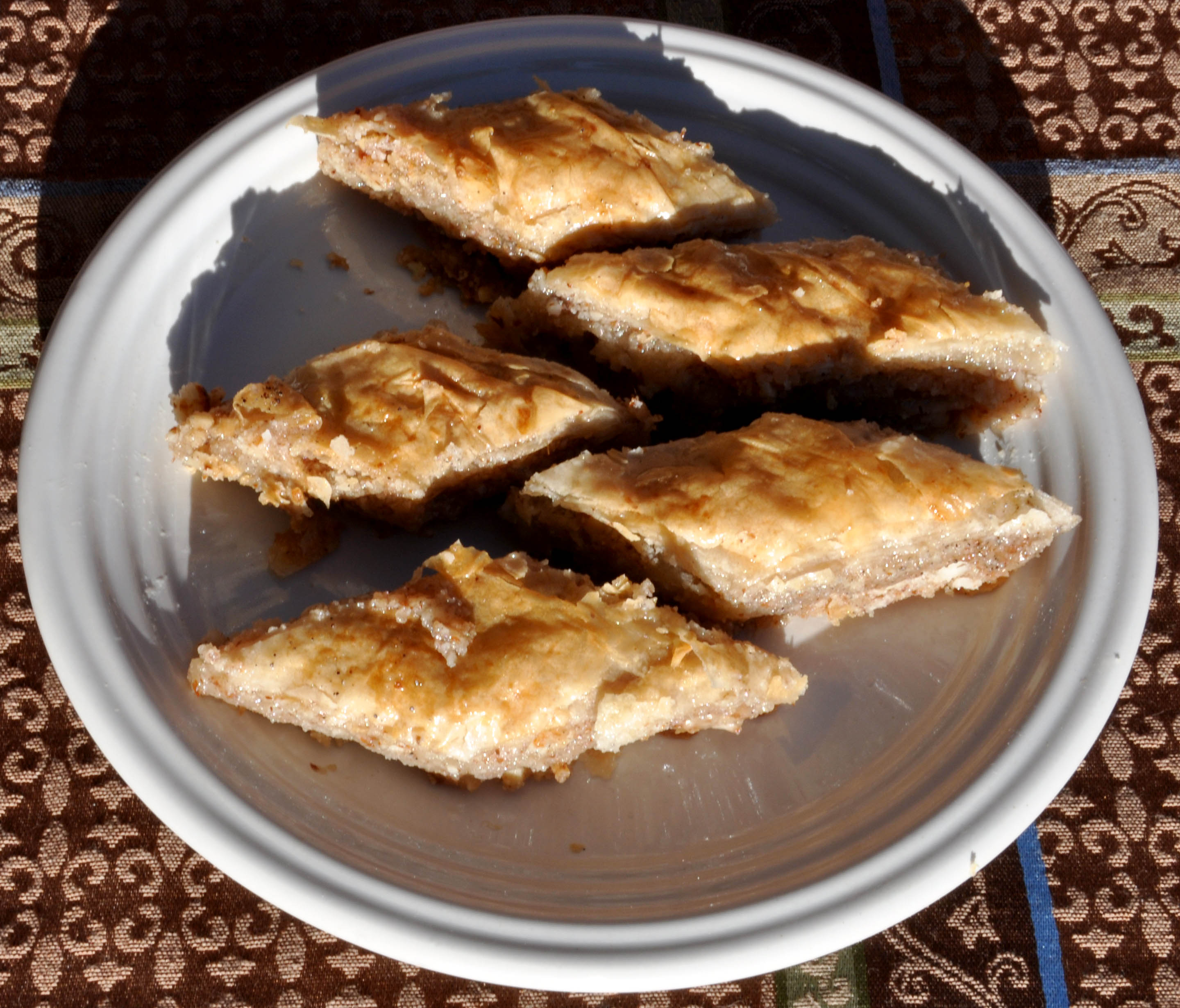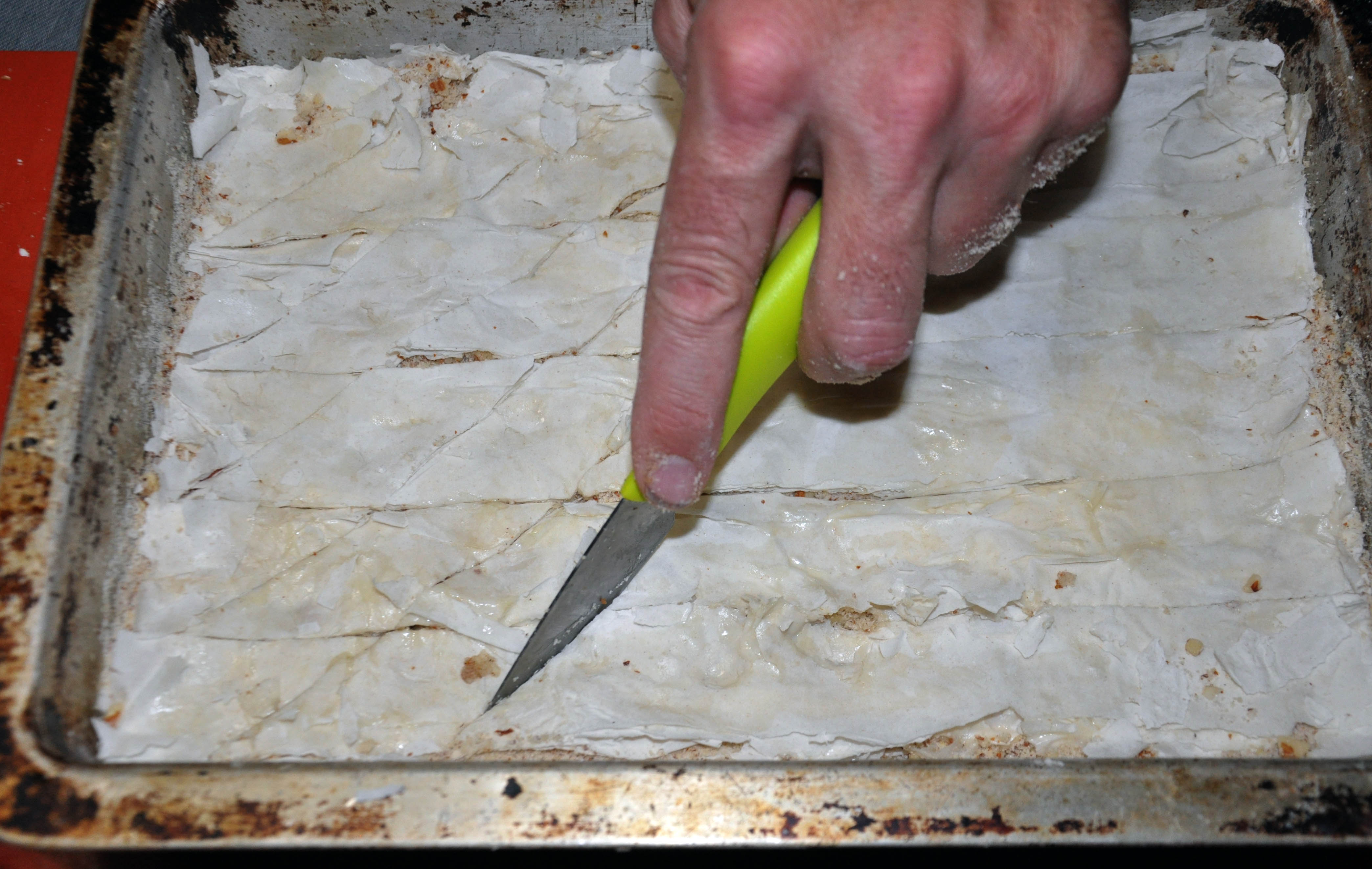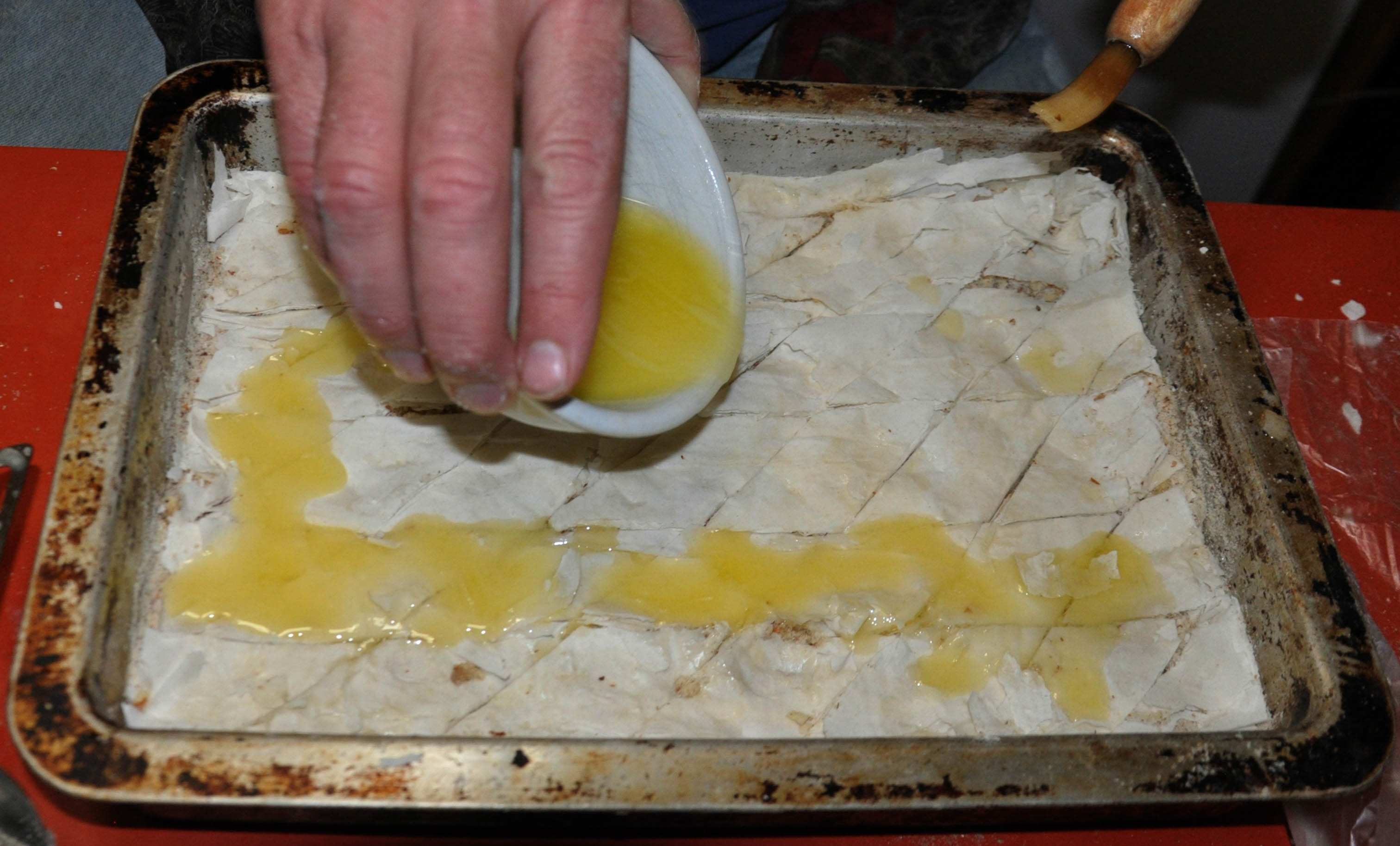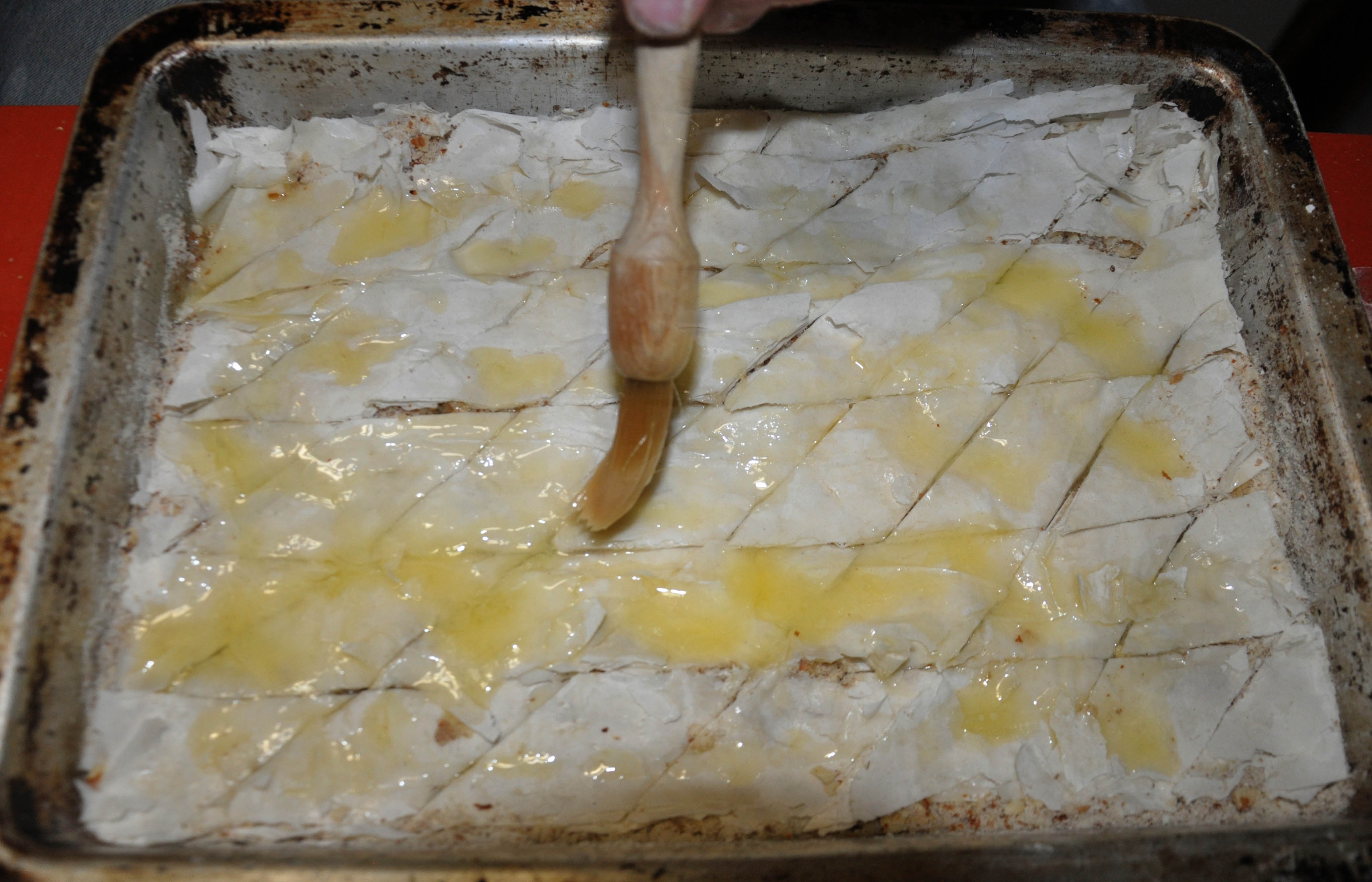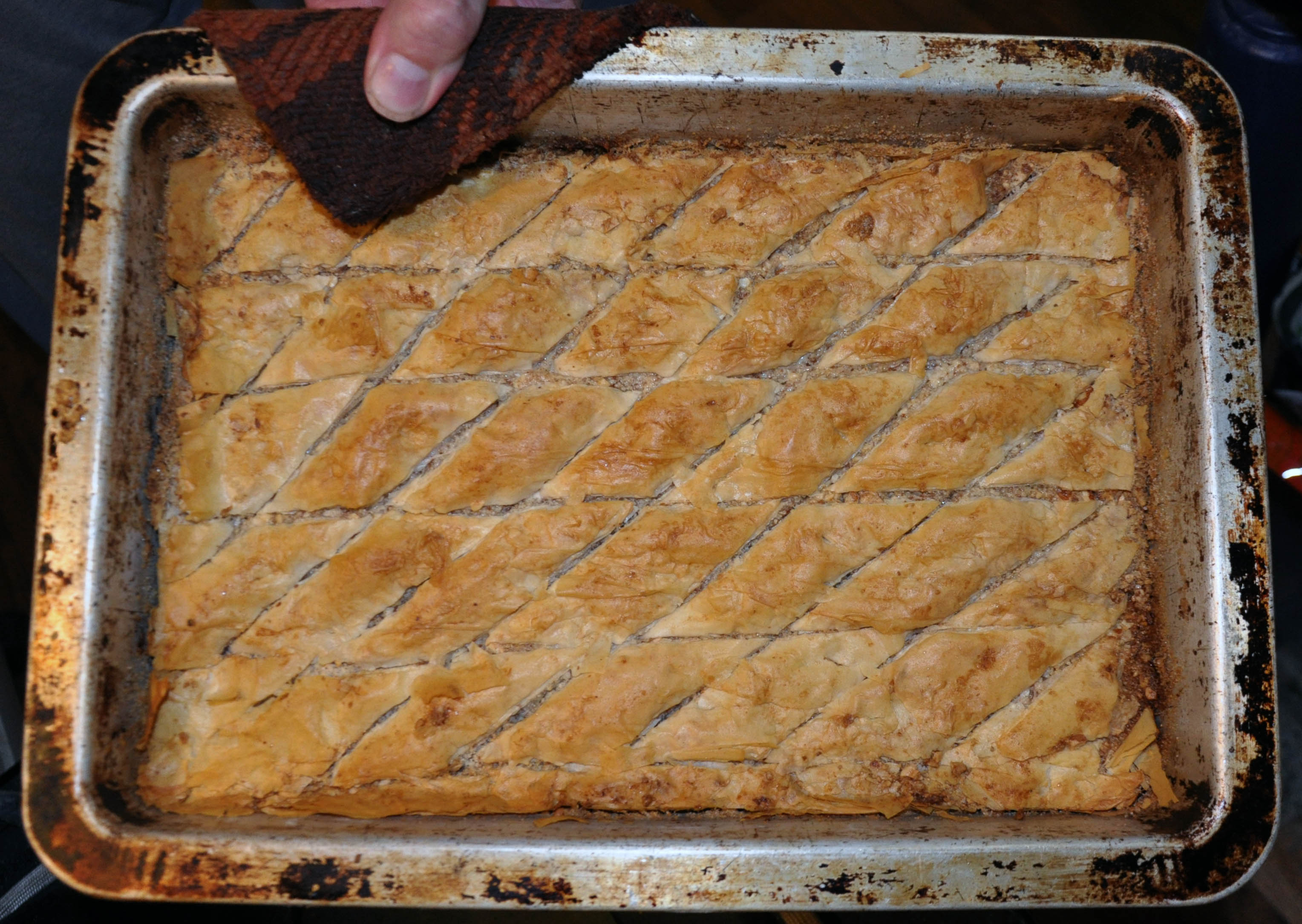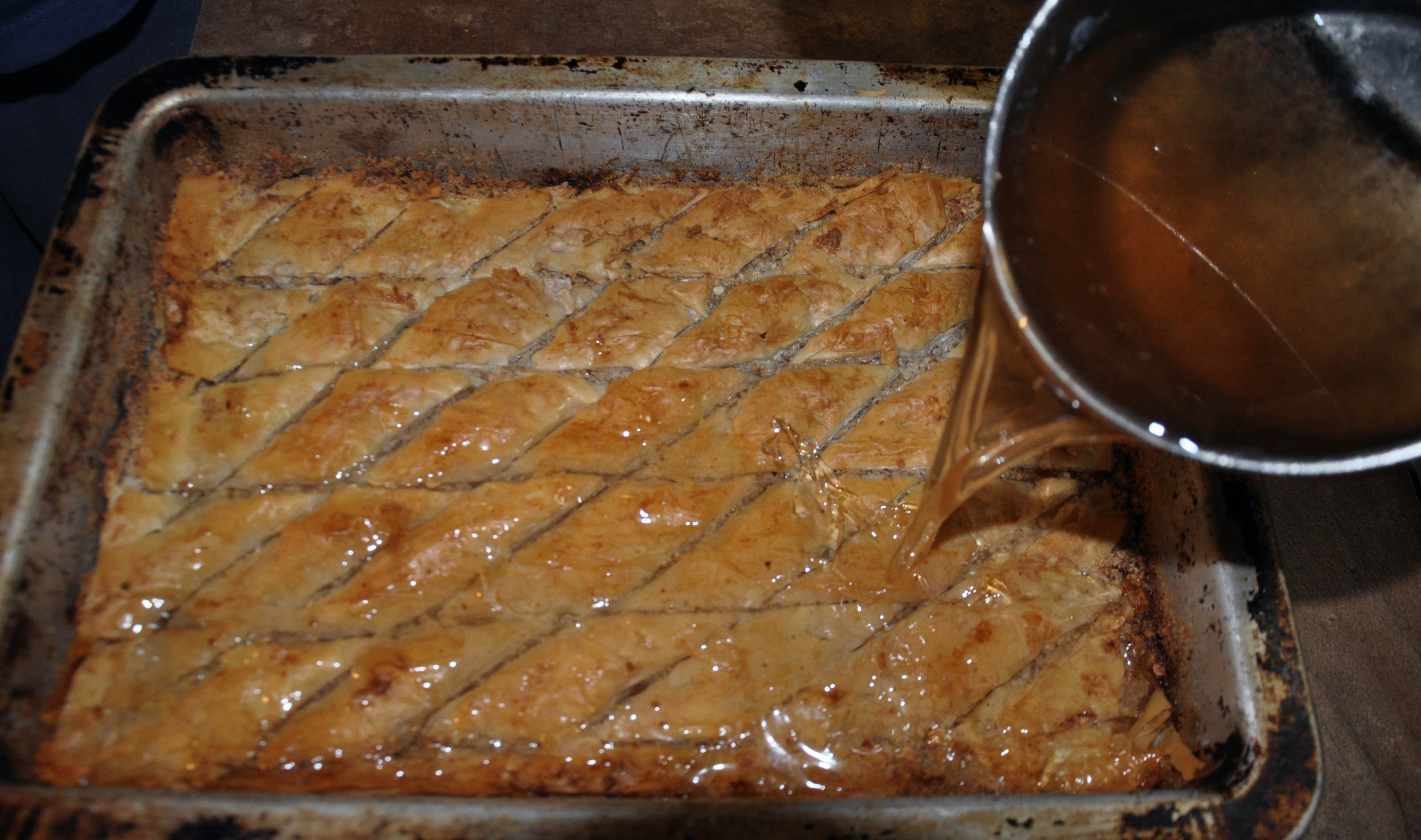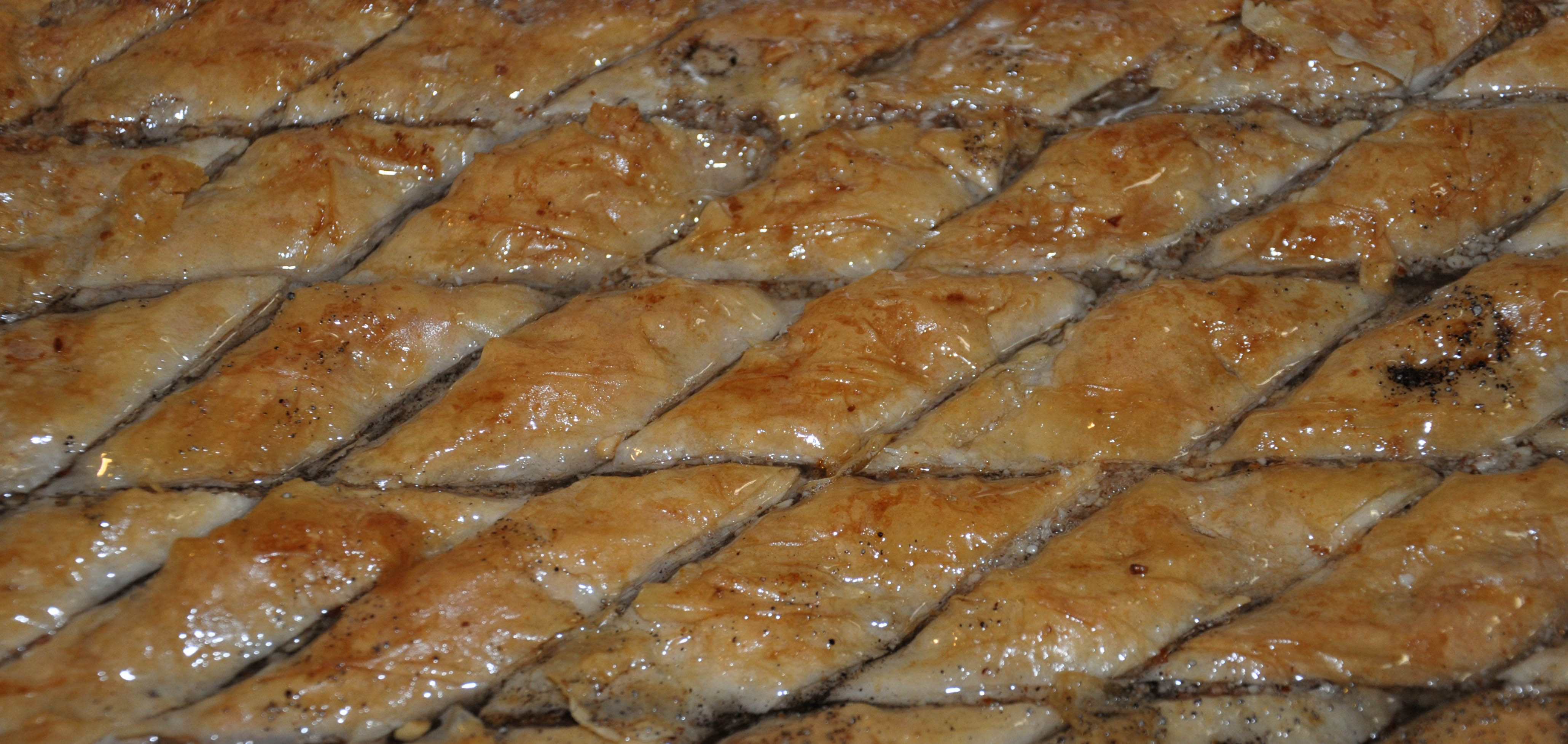
Persian Baklava
We finish our iftar banquet with baklava, a classic Middle Eastern dessert. Sweets are an important part of Middle Eastern banquets, and iftar in particular where fast is broken each evening by consuming dates. A typical banquet feast will have many types of desserts that are considered the most important part of the meal. Thus, if you’d like to celebrate a more authentic iftar, you may consider also serving any number of other Middle Eastern sweets including halva, luqaimat, or kunafeh. The Oxford English Dictionary informs that word ‘baklava’ entered the English language via Robert Withers 1650 translation of Ottaviano Bon’s A description of the Grand Signor's seraglio, or Turkish emperours court. While the modern versions of this dessert – in which a sweetened nut filling is encased between buttered layers of phyllo pastry – apparently originated in the imperial kitchens of the Ottoman Empire, this type of dish can be traced back to the layered breads of central Asia. These include the Azerbaijani pakhlavasi, Uzbeki pakhlava, and Tartar boreks in which savory fillings are also used. There are many types of baklava found across the extent of the former Ottoman Empire typically differing in the type of nut, sweetener, and spices used in the filling. Turkish baklava varies regionally as the common nut crops varies from walnuts (Caucasus Mountains in the east) to almonds (Aegean coast), hazelnuts (Black Sea coast), and pistachios (interior). In Albania walnuts make up the filling, while in the rest of the former Yugoslavian Balkans sugar syrup is also added. Georgian baklava is made with a filling of walnuts, honey, sugar, vanilla, butter, and sour cream. Jordanian baklava filling is typically made from pistachios in a honey syrup. Lebanese baklava differs by adding in orange or rose water into the syrup. The principle flavorings also vary by region, ranging from cinnamon and cloves in Armenia to citrus rind in Israel to cardamom in Iran. Here we describe the making of a typical Persian-style baklava with its characteristic light sugar syrup flavored by rose water and cardamom. Serves at least 6. 3 cups almond flour Syrup2 cups sugar Combine almond flour, chopped almonds, sugar and cardamom. Brush a 9½ by 13 baking pan with butter. Lay three sheets of phyllo in the pan brushing the top of each with butter. Top with 1/3 of the nut mixture and repeat with the next layer. Top the baklava with the final layer is 3 sheets of phyllo brushed with butter. Trim the phyllo edges to make them clean. Score the pastry into diamond shapes about 2/3 deep into the pastry by first cutting lines parallel to the long axis of the pan and then at about a 20° angel from parallel to the short axis. To make a manageable sized baklava, makes these incisions about 1½ to 2 inches apart. Pour the remaining butter over the top encouraging it to run into the scores. Bake in a 350° F. oven for 35 to 40 minutes until nicely browned.
While the pastry is baking, make the syrup by combining the sugar and water in a medium saucepan and bring to a boil. Add in to lemon juice and cardamom and cook at a rapid boil for 15-20 minutes until the syrup has begun to thicken. Remove from heat and add the rosewater. When the pastry comes out of the oven, pour the syrup over the top. Allow to cool completely before cutting and serving – at least 2 hours.
|
